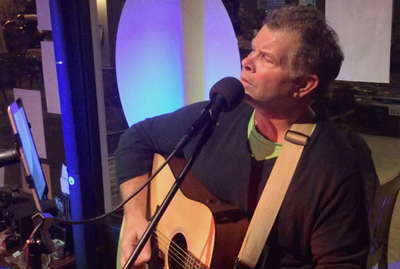 Album: Oakville Ontology
Album: Oakville Ontology
Artist: Patrick Ames
One of the reasons that I love music so much is that, as an art, it forces us to constantly think differently about the world around us. It is through music that we can achieve the most heavenly harmonies and diabolical drumbeats. It is also a medium through which the young can question the ways of the time, and the old can share some hard won wisdom. As well, music has the ability to transcend language, culture, stereotypes, and lifetimes. Patrick Ames’s songs have all of these elements, and also teaches us that music has no limits.
Patrick first began performing at coffeehouses during the 70s. After spending years working in the tech publishing business, Patrick began to seriously focus on his music over the last decade using the lessons that he learned practicing during the previous 30 years.
Released in October last year, Oakville Ontology was Patrick’s second album. Although I am rarely a fan of Americana and Folk, Patrick’s sound is timeless, and his lyrics are full of rich wisdom and astute observations. There are also hints of Jazz and Funk in his music that remind me of a mix between Johnny Cash, Arcade Fire, and Bob Dylan.
“Kickstand” is perhaps my favourite track on this album. The sound is fuller than the other tracks on the album, plus the deep bass, rhythmic drums, and hypnotizing guitar bring to life a style that isn’t typically heard day-to-day. The combination of Motown, rock, blues, and psychedelic is superbly done. However, be prepared for the lengthy 8 minutes of pulsating tempo that will leave you in a gently swaying trance.
“How to Kill a Protest Song” is perhaps one of the most thought provoking ballads that I’ve heard in a very long time. True to the protest songs of old, the lyrics discuss the interplay between politics, culture, and music. However, as an updated version of the protest ballads, Patrick also examines the modern response to similar themes. The accompanying psychedelic sound is splendidly matched. But, like “Kickstand”, the track is very long at over 9 minutes.
Other than these two songs and Patrick’s obvious talent, however, the remainder of the album doesn’t capture my attention. While the lyrics of each song are compelling, and the instruments are expertly played, overall the album lacks the lustre that it could have had. Most of the singing tends to echo too much, an effect that can be influential when used properly, but quickly losses its charm when overdone. Although I enjoyed the couple of songs I mentioned, the echoey singing prevented me from enjoyed the rest of the album.
Samantha Stevens is an aspiring writer who loves combining her love for literature with photography, painting, music, and all creative pursuits.

